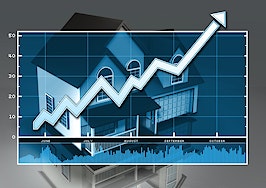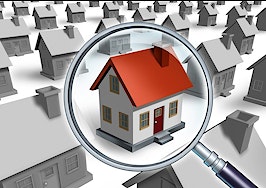You’re on a listing appointment, and you know where the property should be priced.
But when you share your CMA with the sellers, they say, “Zillow says our house is worth more!”
There’s an easy way to win this pricing battle against Zillow valuation — if you know what to do.
Zestimates (Zillow’s automated valuation model that estimates your home’s value) have been a thorn in the side of listing agents since Zillow first launched.
They continue to be a source of angst today among listing agents who lack the skill set to overcome this common seller objection.
Consumers love talking about real estate. Zillow has made it possible for almost anyone to determine the “value” of a property without having to talk to a pushy salesperson.
As a result, when these people decide to list their homes, they often check their Zestimate. If it supports the price they want, they won’t hesitate to say, “Your CMA is wrong — Zillow is right.”
The problem with AVMs
No matter who is using a computer algorithm to price property, there are certain inherent problems with automated valuation models (AVMs). The first issue is that the algorithm has no real way to take the condition or the interior of the property into consideration. Instead, it is limited to working with mathematical averages. According to Corelogic:
“Automated valuation models are based on mathematical assumptions and are not able to consider special factors that may make your home more valuable. Do you live on a lake? Did you refurbish your kitchen? Use this valuation estimate only as a starting point.”
Sampling error
In reality, pricing algorithms actually generate a range of prices rather than a specific sales price. In the case of Zillow, their “sampling error” is about +7.5 percent. This means that on a $300,000 property, the price has a 95 percent probability of being between $277,500 and $322,500. That’s a $45,000 range. On a $300,000 listing, most competent agents can predict the price within $5,000-$10,000.
Better mousetraps?
The simple way to overcome the Zestimate objection is to show the seller the other AVMs as well as the prices that they generate. You can use these other models not only to quickly generate a CMA when you don’t have time to do more thorough research as well as to persuade sellers to be more realistic.
HomeSnap
HomeSnap is currently the easiest of all the existing AVMs to use. All you have to is to snap a picture of the property and the system uses your phone’s GPS to locate the property. It then checks the HomeSnap comparable sale database and generates a price.
CoreLogic’s ePropertyWatch.com
Since CoreLogic operates a large number of Multiple Listing Services nationally, they have very accurate comparable sales data in many places. While they have the same statistical issues that any of these tools have, their MLS access makes ePropertyWatch a tool that can be quite useful to you.
To use ePropertyWatch, you are limited to one address per email. They also ask you to verify that you are the owner of the property. Once you sign up for this service, the system will notify you via email when there are shifts in the value of your property. They also provide you with a list of foreclosure and auction activity as well. This not only keeps you abreast of the market, it allows you to track potential opportunities for investment and/or builder clients.
Moveup.com
If you live in a state where prices paid for property are available through the public records, this tool is far and away the best AVM on the market. Onboard Informatics, one of the most highly regarded data sources in the real estate industry, supplies the sales data for Moveup.com.
What differentiates Moveup.com from its competitors is that you can actually see the properties they are using to calculate the property’s value along with address and square footage information. They actually allow you to delete properties that are not appropriate comparable sales. Moreover, you can adjust their algorithm for property condition, market activity, as well as several other key variables.
Overcoming the objection
To overcome the Zestimate objection, simply use each of these tools to generate a price and then ask, “Which one is correct?”
For an example, for a house where I used to live, the current Zestimate is $443,000. EPropertyWatch placed the valuation at $332,000, HomeSnap placed it $422,000, and Moveup.com placed it at $494,000.
That’s a $162,000 difference in these four computer-generated prices!
Since Moveup.com gave me the actual comparable sales they used, I was able to spot why their estimate was too high. They had one sale that was located in a better area that was $60,000 higher than any of the other comps. When I left this sale out of the mix, the price was $425,780.
So which one is correct? My personal CMA and knowledge of the area put the property value at about $425,000.
So here’s the bottom line. The next time your seller says, “But Zillow says my house is worth more!” generate the numbers from these other sites and then ask the sellers, “Which of these prices would you believe if you were the buyer for this home?”
Virtually all buyers will choose the lowest price.
Continue the conversation by saying, “Let’s take a look at the actual comparable sales, the interior photos of the property, and then come to a price based upon as much complete information as possible.”
Bernice Ross, CEO of RealEstateCoach.com, is a national speaker, trainer and author of the National Association of Realtors’ No. 1 best-seller, “Real Estate Dough: Your Recipe for Real Estate Success.” Hear Bernice’s five-minute daily real estate show, just named “new and notable” by iTunes, at www.RealEstateCoachRadio.com.



